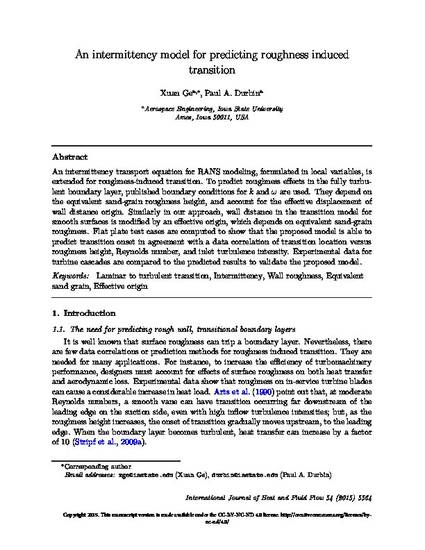
An intermittency transport equation for RANS modeling, formulated in local variables, is extended for roughness-induced transition. To predict roughness effects in the fully turbulent boundary layer, published boundary conditions for k and ω are used. They depend on the equivalent sand-grain roughness height, and account for the effective displacement of wall distance origin. Similarly in our approach, wall distance in the transition model for smooth surfaces is modified by an effective origin, which depends on equivalent sand-grain roughness. Flat plate test cases are computed to show that the proposed model is able to predict transition onset in agreement with a data correlation of transition location versus roughness height, Reynolds number, and inlet turbulence intensity. Experimental data for turbine cascades are compared to the predicted results to validate the proposed model.
Available at: http://works.bepress.com/paul_durbin/15/

This is a manuscript of an article from International Journal of Heat and Fluid Flow 54 (2015): 55, doi:10.1016/j.ijheatfluidflow.2015.05.003. Posted wither permission